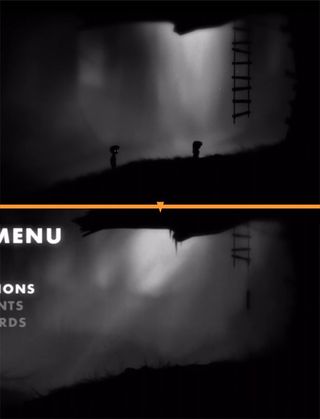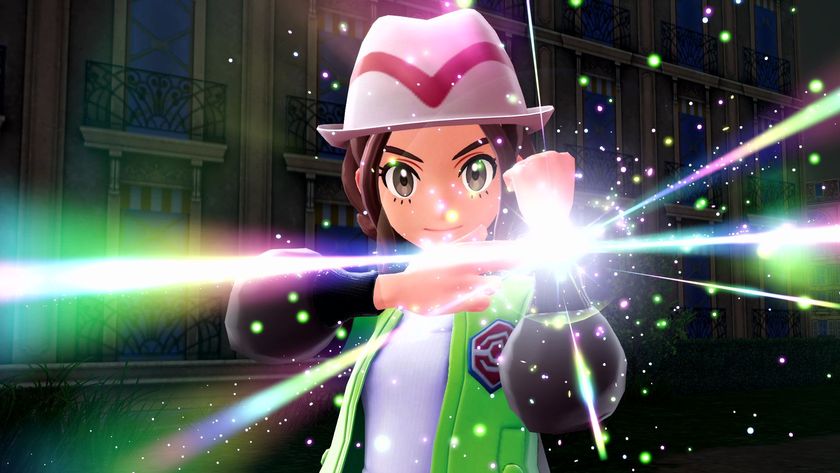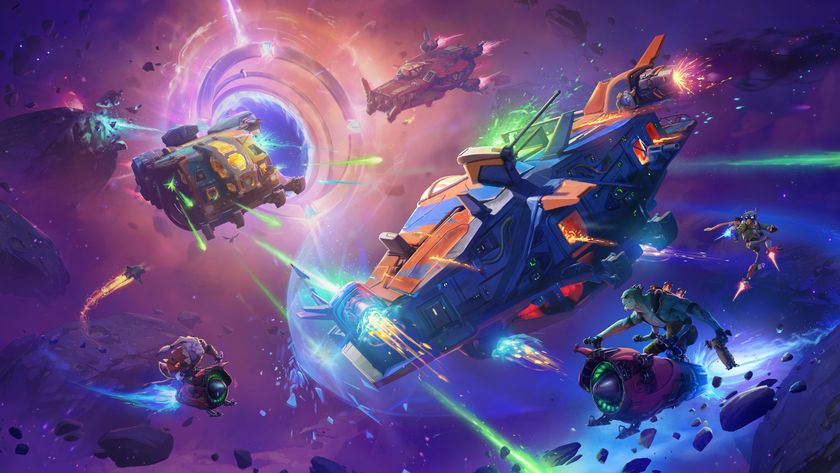Limbo: what does it all mean?
Six different takes on the game's ambiguous end
From the moment we saw the first black and white screenshots, we knew Limbo was going to be something unique. But we didn’t know it would turn out to be this year’s Braid, an independently developed, refreshingly clever take on the puzzle platformer genre that manages to spur conversation by including just enough uncertainty in the plot.
The developers at PlayDead Studios have gone on record saying there is no official meaningto Limbo or its ending, making it ripe for personal speculation. The only sanctioned story is “Unsure of his sister’s fate, a boy enters the unknown.” Here’s our take on the game’s many puzzles, environments, deaths and ultimate end – when we’re through, please share your thoughts in the comments!

Above: THERE WILL BE SPOILERS SO SHADDUP

Looking back, it seems clear to me that Limbo is a musing on the pain and confusion of adolescence, as well as the need to hold onto the innocence of one's childhood while making the transition to adulthood. The key to it all is the nature of The Boy's quest and the procession of environments, dangers and enemies he encounters along the way.
He begins in an ethereal woodland environment, fairytale-like in its trappings, despite all of the horrors on show. This section represents childhood, an idea confirmed by the fact that the greatest adversary it holds is a huge, shadowy spider-like creature. A childhood fear for a childhood world.

The next distinct environment occurs when The Boy moves underground and begins to encounter Limbo's more sentient inhabitants, the humanoid, weapon-using Lost Boy-style characters. This section, to me, carried a major Lord of the Flies feel, evoking the idea that this was The Boy's journey to high school. Away from the safety of his childhood, he encounters an aggressive wider peer group and established hierarchy, and has to survive by his wits and evasive skills against their organized, group-led violence.
Following this is his first experience of the wider adult world at large, typified by the broken down hotel. Suddenly the world of grown-ups isn't the perfect place he believed it was. It's a sinister, dirty, sleazy place, and the grotty hotel, with its sordid sexual connotations, is central to this whole metaphor.
Sign up to the GamesRadar+ Newsletter
Weekly digests, tales from the communities you love, and more
And finally he reaches the roaring, screeching industrial area. This, with its grinding machinery, repetitive automated routines and treadmill conveyor belts, represents fear of being trapped into the perceived mundanity of adult working life.

And central to all of this is The Boy's search for his sister. If you've had a sibling of a similar age, you'll know that that relationship forms the core of your whole childhood experience. They are your closest relationship, your closest peer and your playmate, your interaction with them forming everything of who you will evolve into as a child. They're the closest to you anyone will ever be, both in terms of shared experiences and genetics. The loss of his sister thus encapsulates all of The Boy's fears of losing himself, and he must find her in order to maintain his identity and remain a whole person during his oppressive trails on the way to adulthood.
Limbo, the word in the title, does not refer only to the physical world the game takes place in. It refers to the metaphorical state that the boy's development takes him through. He is growing past being a child and is not yet a man, and he must hold onto his sister, and therefore himself, as he navigates his way through this dangerous state of flux.
I tend not to delve too deeply into the meaning of a game – is Red Dead Redemption a dusty, desolate meditation on the futility of the human condition? No, it’s an amazing cowboy game in which I can get drunk, have gunfights and be mauled by a cougar. Perhaps this face-value attitude is why I feel Limbo is actually being totally straightforward and open about what’s going on. It’s right there in the title…
He’s dead. They both are.

The girl died earlier. So what we’re experiencing is the journey of the boy, moments after his Earthly demise, questing through the murky in-between of Limbo (not the dance with a stick, but thespiritual place) to be rejoined with his sister in the afterlife. The theology of it can get a bit heavy, but here’s the basic gist: People who die and who are neither corrupt enough for Hell nor saved enough for Heaven go to Limbo. He’s overcoming obstacles as a way of undergoing spiritual cleansing, and when the time comes, he and his sister – who, by the way, is knelt in prayer the first time we see her – will enter Heaven together.
Morbid? Yes. Complicated? Not really.

Maybe it’s because I’ve played too many games and seen too many movies with giant, revelatory plot twists, but I got a strong sense of foreboding about Limbo the second the other kids started showing up. Why did they set all these traps? Why were they so aggressively trying to kill me, and then fleeing whenever I’d get close? I wasn’t the giant, hunting spider, after all, and if anything their actions seemed to leave them defenseless against said arachnid. Either it’s all just a big misunderstanding, or – and I see this as more likely – they have excellent reason to be afraid of you.
No, the protagonist of Limbo doesn’t seem very threatening. It’s not as if he has any guns or abilities beyond jumping and pulling on things. But how much do you know about him, really? He’s pretty resourceful when it comes to manipulating the world around him. He kills a creature by ripping its last leg off and rolling its carcass onto spikes. And he seems to have no compunction about killing kids later in the game by leading them through deadly hydraulic presses. And he dies, over and over again, only to resume his relentless push forward seconds later.

Above: Quit chasin’ me, y’dumb brat!
Like it or not, there’s a lot to suggest that you’re the villain in Limbo, and that your quest to find the boy’s missing sister might not be as innocent as it seems.
The ending itself is what seals it. After crashing into a wooded glen that looks an awful lot like the one in which you start the game, you finally find the boy’s sister. She isn’t in a posture that suggests distress; she’s crouching on the ground, possibly playing, possibly picking something, possibly digging. As the boy approaches – in a very slow, ominous way – she stiffens and doesn’t look behind her.
Cut to credits, and Limbo’s title screen… which happens to look almost exactly like the area where you found the boy’s sister. The differences?

A lot of time has apparently passed, as the rope ladder has mostly rotted away and the vegetation’s gotten a little more unkempt. There’s also a suspiciously well-defined lump on the ground that corresponds to the area right in front of where the boy was standing. And we can hear flies – a lot of flies – buzzing, suggesting there’s something disgusting nearby.
Given the game’s macabre tone, this leaves two possibilities. The first is that the boy killed his sister and left her to rot in the woods. The other kids, the ones who set the traps? They were her defenders. The entire thing was a gauntlet designed to keep the boy from killing his sibling, and you were the villain all along.
The second (and more fitting) possibility is that she killed him. Maybe he tried to kill her first. Maybe she’d been trying to kill him all along. The motives and specifics don’t really matter; all that matters is that he’s dead, doomed to rise again and repeat the actions that led to his demise, like a ghost. Or a soul trapped in limbo.
GamesRadar+ was first founded in 1999, and since then has been dedicated to delivering video game-related news, reviews, previews, features, and more. Since late 2014, the website has been the online home of Total Film, SFX, Edge, and PLAY magazines, with comics site Newsarama joining the fold in 2020. Our aim as the global GamesRadar Staff team is to take you closer to the games, movies, TV shows, and comics that you love. We want to upgrade your downtime, and help you make the most of your time, money, and skills. We always aim to entertain, inform, and inspire through our mix of content - which includes news, reviews, features, tips, buying guides, and videos.













Pokemon Legends: Z-A will allegedly introduce 27 new Mega Evolutions, leakers claim, and we can only hope Flygon gets its chance this time

16 years after Minecraft first released it's getting a modern visual upgrade with a retro lighting trick that Mojang hasn't seen "in any other game"





